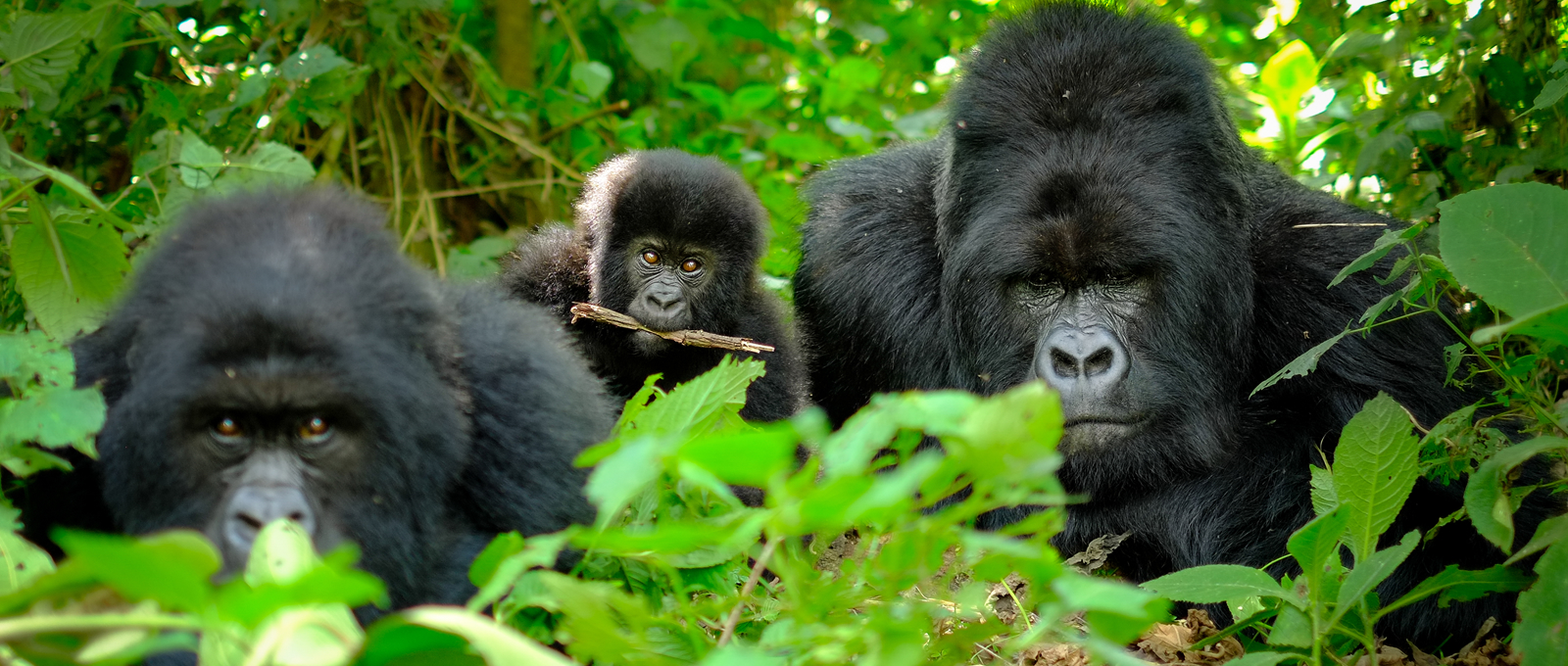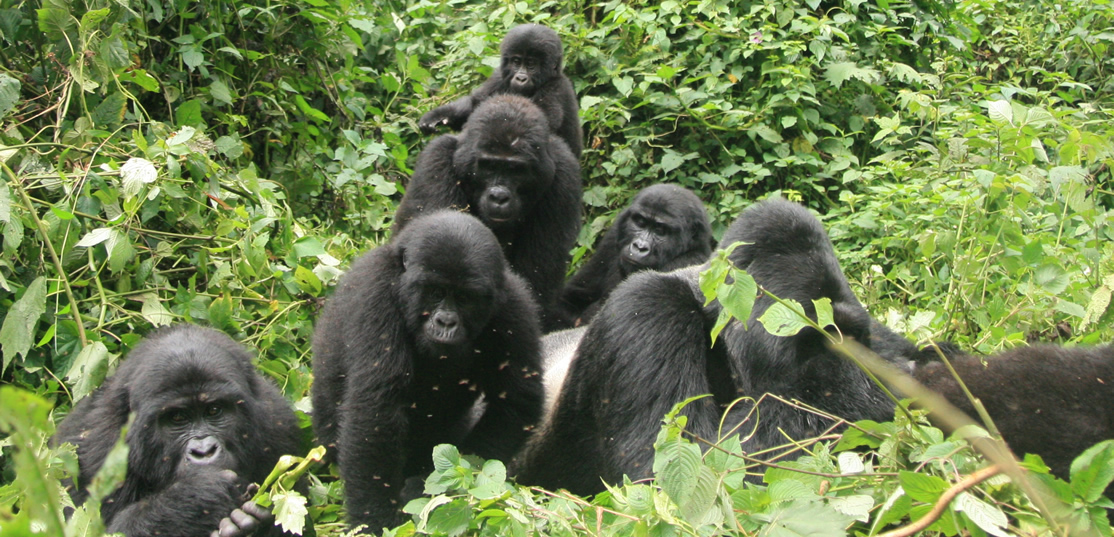Things To Consider Before Going on 1 Day Rwanda Gorilla Trek
Things To Consider Before Going on 1 Day Rwanda Gorilla Trek –
Mountain gorillas are a species that has been marked to be critically endangered for a long time now. According to WWF-UK, primate species have very few individuals in the wild. They are only just above 1000 in the world.
Luckily, some of the few existing ones of the species can be found in the East African Region particularly Uganda, Rwanda, and the Democratic Republic of Congo. This is partly because Mountain Gorillas love the tropical climate and the East African Region rests between the tropical and Equatorial climates, favorable for these animals’ way of life and adaptation.
1 DAY REMARKABLE MOUNTAIN GORILLA TREKKING IN RWANDA- TREK GORILLAS IN VOLCANOES NATIONAL PARK
Gorilla trekking is a very beautiful experience and you will get to understand why these creatures are closely called our cousins and human beings. Getting to experience these primates in their natural habitat is a once-in-a-lifetime experience. The two best places to see mountain gorillas are Uganda’s Bwindi Impenetrable Forest National Park and Rwanda’s Volcanoes National Park. The Democratic Republic of Congo has suffered some insecurity and is therefore not recommended. Rwanda lies more in the tropics than Uganda which is purely in the equatorial region and there, the vegetation slightly differs from that of the Bwindi Impenetrable forest.
When to Go:
Uganda and Rwanda share a common climate and although gorilla trekking is considered a year-round activity, you need to know that there will be seasons of rain. The months of the least rainfall are between July and August.
To be comfortable and avoid any inconvenience, make sure to wear comfortable shoes any time you choose to go Gorilla trekking.
Am I guaranteed to see mountain gorillas?
You are 99% guaranteed to see the Gorillas while you trek in Rwanda. This is especially because of the bamboo vegetation that is not too dense, therefore enabling you to see.
When you find a gorilla family, your ranger will ask you to leave everything but your camera. He will then take you close enough to observe the gorillas intimately without threatening them.
There are no fences between you; only mutual respect. The gorillas are habituated to human observers and go about their natural business – foraging, grooming, and napping – without fear.
Occasionally, the younger gorillas may be curious and more playful than the older ones. Keep your distance, stay quiet and enjoy the experience, you will live to retell the story.

Gorilla Trekking
Please note: You are not allowed to touch the gorillas. They are highly susceptible to human diseases therefore you should not touch them. This is done to prevent them from further extinction since they are already critically endangered, everything is done to conserve them. Because they are also wild animals, it is safe to keep a distance from them.
How Fit Do I Have to Be?
Trekking is an activity that involves walking at different altitudes, therefore the fitter you are, the better. If you are not as strong, you can let your tour guide know and they will put you on a route to a closer gorilla family.
Permits.
Gorilla trekking is a highly coveted activity because the species are endangered and because of this, permits are expensive.
Permits can be through a safari agent or tour operator. A gorilla trekking permit for Volcanoes National Park in Rwanda costs $1,500.
Gorilla diet:
Mountain gorillas are primarily herbivores. Their diet consists of plants such as roots, shoots, wild celery, and fruits, all of which flourish in the wild where they stay. In Rwanda, they eat the bamboo that grows in their habitat as well.
How many people are in each trekking group?
The maximum number of visitors реr day for each gorilla troop is eight, without including the guides.
One permit will allow you to visit one gorilla troop and your guide will assess and choose which family you will visit based on factors like your physical condition and the time you have available. Once there, you’re only allowed to spend one hour with the troop, to avoid causing distress to them.
How long does it take to find the gorillas?
The distance to the gorillas will depend on the place the family you have chosen says. It will take you a shorter time to see the gorillas for a family that stays close by and a longer time for one that’s further away.
What happens when we find the gorillas?
Once your group finds its gorilla troop, you can sit down and watch. You will be mesmerized. You are encouraged to pull out your camera and take photos, without a flash. You are also advised to avoid any sudden movements and any noise as this will distress the primates.
Keep a distance at all times- not less than 3 meters!
If the dominant male gorilla, the silverback who is in charge of looking out for the troop comes close to you, do not shout. Remain where you are and simply crouch, slowly.
Never stare directly at a gorilla, they see this as a sign of hostility and might get aggressive.
Never feed the gorillas or eat while near them. It is forbidden.
Children below 15 years of age will also not be allowed to go along for gorilla trekking.
Safety: Rwanda is peaceful so you do not have to worry about any unrest while on your trip.

Silverback Gorilla
Must-haves for the trip.
- A strong pair of shoes and even gloves in case you are the type of person that likes to touch things. You might want to.
- Your camera captures memories for the future.
- Insect repellent because you will be in the wild which is a habitat for many insects too.
- Camera. You’re going to want to capture some scenes from your trek and time with the gorillas. Also, bring a waterproof bag to put the camera in should it rain.
- A walking stick to assist you when the altitude during the trek changes. If you do not have one, ask your tour guide who can get you one for hire.
- A backpack for your essentials like a raincoat and camera during the trip.
- Lightweight clothing to enable you to move but wear long sleeves and keep your legs covered to avoid scratches or insect bites. Put on thick socks to avoid crawling insects from entering your shoes.
- Avoid wearing dark colors because they attract insects and also might hide the dirt you accumulated during the trip.
- Can I hire a porter on a gorilla trek?
- Yes, you can. Talk to your tour guide about this possibility.
- Do I need to tip my trekking guide?
- Yes, you can. By doing this, you will also be contributing to gorilla conservation because when the people that stay close to their habitat are tipped, they do their best to protect them from poachers.
Leave A Comment